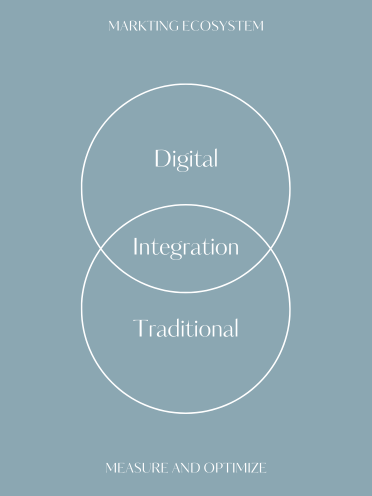My experiences and some tips on designing and operating integrated marketing ecosystems
In today’s fast-paced digital world, more than traditional marketing tactics is required to reach and engage with customers effectively. To stay ahead of the competition, businesses must design and operate an integrated marketing ecosystem that aligns various marketing channels, strategies, and technologies. So, let’s discuss the importance of an integrated marketing ecosystem and share valuable experiences and tips for digital marketing professionals.
An integrated marketing ecosystem refers to the seamless synchronization of various marketing initiatives, such as content marketing, social media advertising, email marketing, search engine optimization (SEO), and influencer collaborations. The goal is to create a harmonious synergy between all these channels, ensuring consistent messaging and optimal reach.
Experiences and Tips:
-
Developing a comprehensive marketing strategy:
Begin by clearly defining your marketing objectives, target audience, and key performance indicators (KPIs). This will guide your decision-making process and help you select and integrate the most suitable marketing channels and technologies.
-
Centralize data and communications:
Implement a central CRM system or marketing automation platform to capture and analyze customer data from various touchpoints. This will enable you to gain insights into customer behavior and preferences, create personalized experiences, and streamline communication efforts across different channels.
-
Consistent brand messaging:
Maintain a consistent brand identity across all marketing channels. Ensure that the visual elements, tone of voice, and messaging align with your brand’s values and positioning. This will enhance brand recognition and customer loyalty.
-
Embrace omnichannel marketing:
Integrate your marketing channels to provide a seamless experience for your audience. For example, utilize social media platforms to drive traffic to your website, include links to your social media profiles in email campaigns, and provide personalized website content based on customer behavior and preferences.
-
Measure and optimize:
Regularly analyze and evaluate the performance of your integrated marketing ecosystem using KPIs and data-driven insights. This will help identify areas of improvement and optimize your strategies accordingly.
-
Adaptability and agility:
The digital landscape is constantly evolving, so staying updated with the latest trends, technologies, and consumer behaviors is crucial. Continuously monitor the industry and be ready to adapt your marketing ecosystem to meet new opportunities and challenges.
Creating an integrated marketing ecosystem is vital for digital marketing professionals to maximize productivity, increase brand awareness, and effectively engage with their target audience. Businesses can achieve a holistic, seamless marketing approach by leveraging various marketing channels, technologies, and strategies. Remember to focus on consistency, personalization, and ongoing optimization to stay ahead of the curve in this ever-evolving digital world.

